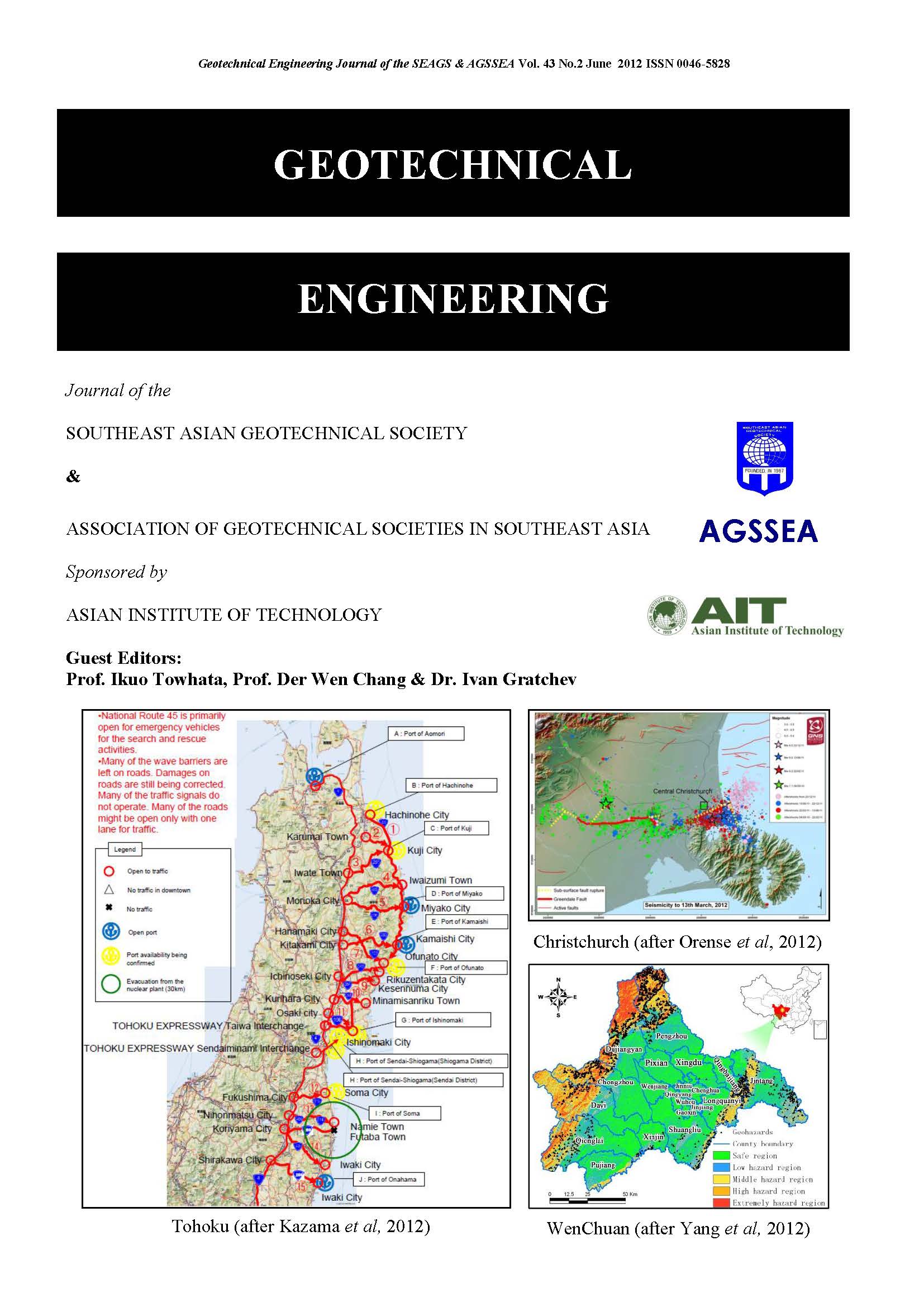Numerical Simulation of Seismic Slope Stability Analysis based on Tension-Shear Failure Mechanism
Main Article Content
Abstract
Most slope stability analysis approaches regard the failure mechanism of seismic slope as single shear failure while ignoring the influence of tension failure. However, many model testes and a large number of post-earthquake investigations provided supporting evidence of the significant influence of tension failure in seismic slope instability. To estimate the effects of tension failure on seismic slope stability, a numerical modeling considering both shear and tension failure is performed using FLAC3D. After discussions of failure mechanism, strength reduction techniques and the definition of slope failure, a homogeneity slope under a modified transverse earthquake load is analyzed. The results obtained from the simulation are presented in terms of permanent displacement, factor of safety and failure surface. Finally, the outcomes compared with those from various existing methods. The results show that the influence of tension failure is significant and consideration of it is necessary.
Article Details

This work is licensed under a Creative Commons Attribution-NonCommercial-NoDerivatives 4.0 International License.
Copyright © 2019 Association of Geotechnical Societies in Southeast Asia (AGSSEA) - Southeast Asian Geotechnical Society (SEAGS).


